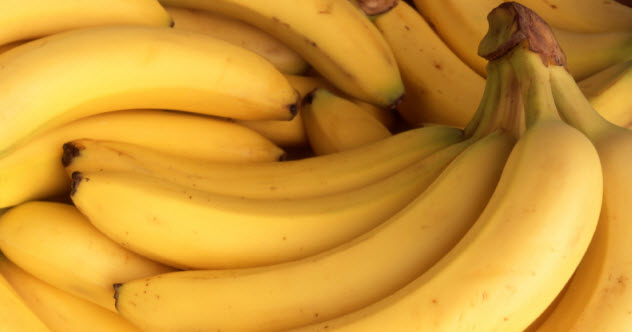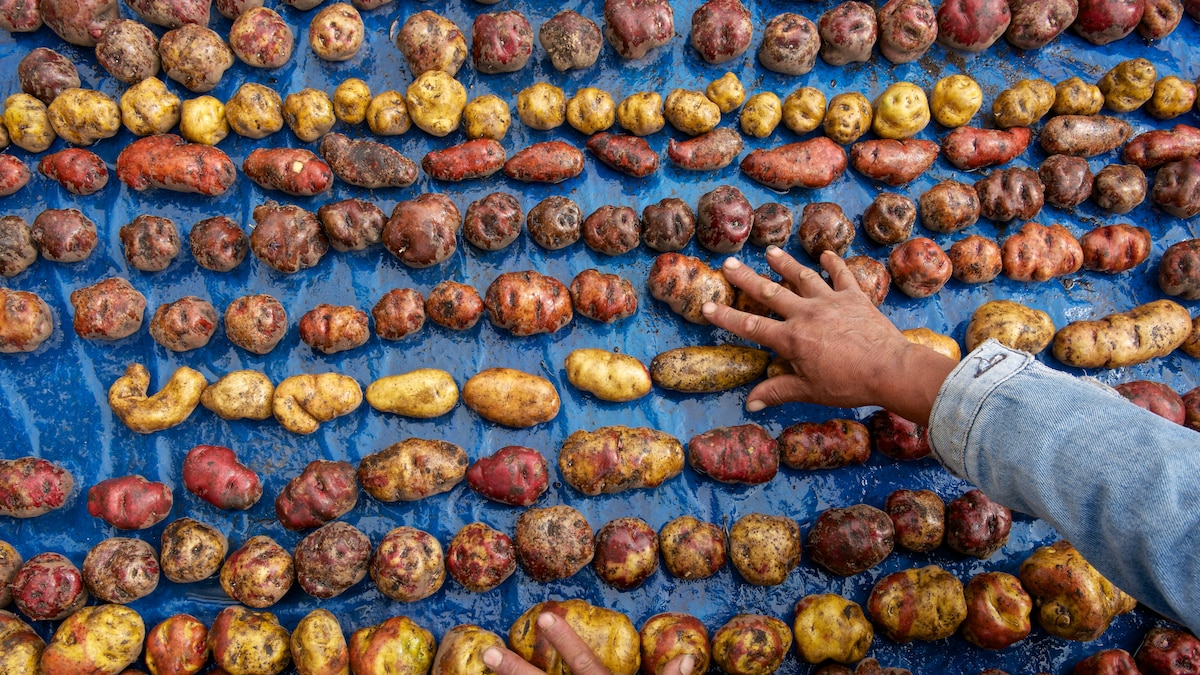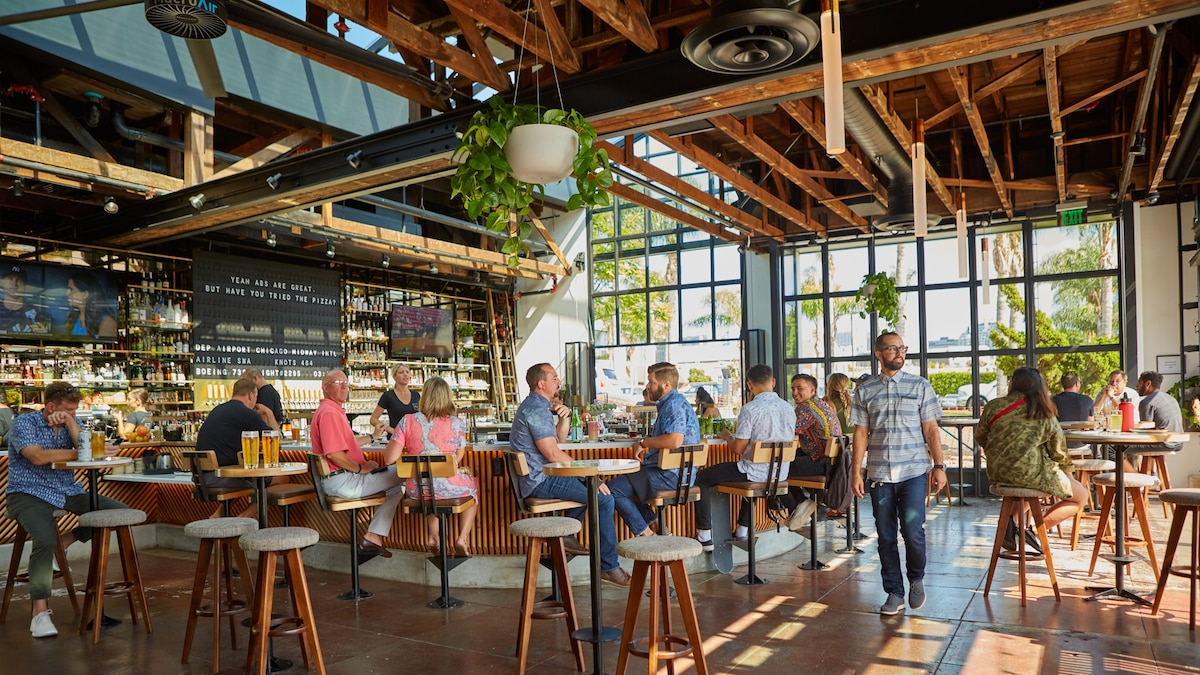Now Reading: How Santiago became the holy grail of pilgrimages
-
01
How Santiago became the holy grail of pilgrimages
How Santiago became the holy grail of pilgrimages

This article was produced by National Geographic Traveller (UK).
Some cheer, some clap, some clasp each other’s shoulders in quiet ecstasy. One lets his walking stick fall to the ground, one kicks her walking boots off, another stretches his sore back and sighs. But most sit on the cobbled square and lean back, resting on backpacks stuffed like pillows. In front of them, the cathedral’s western towers reach heavenwards, and seem even taller from this low angle. With no farther left to walk, the pilgrims lie and stare.
“Lying in the Praza do Obradoiro at the end of the Camino de Santiago is a tradition,” says guide Maria Guerra Gomez of 1 2 Tours, her halo of black curls bouncing with her nods as we watch pilgrims take in their first sight of the square’s imposing cathedral. We’re exploring Santiago de Compostela, the capital of Spain’s northwestern Galicia region and one of the major centres of Christianity alongside Rome and Jerusalem. “I did it, too — and thought the facade would topple over.”
I see what Maria means. Made of light granite and dotted with the carved shapes of scallop shells — an ancient symbol of the Camino de Santiago (Way of St James) pilgrimage — the cathedral looks like a giant, ornate sandcastle that could be blown away by a strong gust of wind from the Atlantic. Yet, a church has stood on this site since the ninth century, when — according to tradition — the remains of Santiago El Mayor (St James the Great) were discovered here.

The appeal of the Camino now goes far beyond its religious foundations, with a new generation of pilgrims coming for quiet contemplation and the chance to immerse themselves in nature.
Photograph by Alamy, Hemis
So the legend goes: the saint was one of the Twelve Apostles and part of Jesus’ three-man inner circle. Following his martyrdom in Jerusalem in the first century, he was buried in the Iberian Peninsula, where he’d introduced the Gospel. The location was lost to time, until mysterious lights led a local hermit deep into a forest to the sepulchre. A shrine was built to mark the site, and the cult of Santiago was born.
The faithful from across Europe began trekking to see the holy relics — and never stopped, forever changing the fortunes of the area. In response to their influx, the shrine grew into a cathedral, and a city developed around it. The network of trails leading to Santiago de Compostela became the Camino de Santiago, one of the biggest pilgrimages in the world by any measure. In 2024, a record half a million travellers ‘completed’ it, walking or cycling 100 or 200 miles to the city, respectively.
The appeal of the Camino now goes far beyond its religious foundations, with a new generation of pilgrims coming for quiet contemplation and the chance to immerse themselves in nature. In the square, I meet a Polish graduate who likens the path to a Catholic prayer, and a Dutch writer who trekked it to set resolutions for personal growth. I hear stories of a French girl who came on foot from her front door, and a Swiss man who kept walking long past the finish line.
“I did it to prove I could do it,” says Maria. Born in Spain’s Canary Islands to a Galician mother, she first saw Santiago de Compostela at the end of her pilgrimage, and she’s now lived in the city for more than 20 years. “It welcomed me with open arms, and it expressed to me the entire Camino. I felt like I was back in medieval times, and maybe the pilgrims of old felt the same things I was feeling.”

In 2024, a record half a million travellers ‘completed’ the pilgrimage through the Camino de Santiago, walking or cycling 100 or 200 miles to the city, respectively.
Photograph by AWL Images, Hemis

Santiago himself used to be a fisherman. According to the Bible, Jesus nicknamed him ‘Son of Thunder’ due to his temper.
Photograph by 4Corners Images
Some of the traditions set by those early pilgrims are still observed today. Maria leads me inside the cathedral, down the simple, Romanesque nave to the gold-plated, baroque Main Chapel. We join a queue for the customary circuit of the altar: down into a crypt to see the relics, a silver casket in Santiago’s ancient tomb, then up via a passageway to hug his statue, which dominates the structure. A man before me places his hands and forehead on the bust, closes his eyes and pauses, a moment so intimate I shift my gaze.
Walk around the Old Town, and you’ll find this deep sense of spirituality is built into the city itself. We pass the monastic complex of San Martín Pinario, which offers guest rooms reminiscent of monk’s quarters, empty but for wrought-iron beds and writing desks. Then there’s the monastery of San Paio, where cloistered Benedictine nuns sell tarta de Santiago, almond pies bearing the Santiago Cross, another symbol of the pilgrimage. Visitors ring a bell, and receive their order through a revolving window.
We reach Mercado de Abastos, the city’s food market and second main attraction. It’s made up of eight granite halls, each with an entrance reminiscent of a Romanesque chapel, with long aisles like naves. On display are crates of cachelos (Galician potatoes) and grelos (turnip greens), Iberian hams and chorizos. “The architect wanted to create a cathedral of products,” says Maria, handing me a slice of mild tetilla cheese to sample, which is made from cow’s milk.

Within Santiago de Compostea’s Old Town, there’s the monastery of San Paio, where Benedictine nuns sell tarta de Santiago, almond pies bearing the Santiago Cross. Visitors ring a bell, and receive their order through a revolving window.
Photograph by AWL Images, Hemis
Producers have been coming here to sell their wares since the 19th century. “Some 80% of Galicians still live in the countryside, and our coast is so rich in seafood,” says Maria, as we pass thick piles of ice topped with velvet crabs, octopus and percebes (goose barnacles). Scallops, the shells of which we saw earlier, carved into the stone of Santiago Cathedral, are on offer as well, of course. “The cult of food, too, forms a strong part of our culture.”
Santiago himself used to be a fisherman. According to the Bible, Jesus nicknamed him ‘Son of Thunder’ due to his temper. The moniker seems fitting given that in Galicia, his supposed place of rest, it rains for around 150 days a year on average. The resulting landscape is so green, it could pass for Wales; Santiago de Compostela is actually one of the cities with the highest square footage of park space per inhabitant in the whole of Spain.
After leaving Maria, I head to Parque de San Domingos de Bonaval, the former estate of a Dominican convent that sits on a hill on the outskirts of the Old Town. I stroll to the oak grove at its top; looking down, I take in the view of the city’s rooftops and cathedral towers, which gradually fades into a haze in the far distance. All this was built for the pilgrims, who arrived step after step, century after century; the cult of Santiago is shrouded in lore, but this much can’t be denied, a fact as miraculous as anything here. So, I take my cue and sit on the grass, lie back and stare.
Published in the June 2025 issue of National Geographic Traveller (UK).
To subscribe to National Geographic Traveller (UK) magazine click here. (Available in select countries only).























